Multi-WiIR: Multi-User Identity Legitimacy Authentication Based on WiFi Device
Abstract
1. Introduction
- We propose and implement Multi-WiIR, a multi-user legitimacy authentication system that detects the presence of trespassers in a scenario through the use of commercial WiFi devices. We evaluated the system in a real-world environment and showed that the system can concurrently authenticate the legitimacy of up to four users with an accuracy of 85.11%.
- We propose a multi-branch deep learning model termed WiIR-Net. It employs convolutional neural networks (CNN) as the backbone, with multiple BiLSTM [19] branches for feature extraction. Each branch is equipped with a binary classifier, and the legitimacy of each user is determined by comparing the output of each classifier with a predefined threshold. Consequently, the multi-user legitimacy authentication problem is transformed into a single-user legitimacy authentication problem.
- We conducted comparative experiments of operational efficiency and evaluation metrics between Multi-WiIR and various other models. The experimental outcomes demonstrated that the multi-branch architecture of Multi-WiIR enhanced the operational efficiency by 35.8% over multi-model multi-user legitimacy systems, and it surpassed the other classic models by nearly 5 percentage points in terms of performance.
2. Related Work
3. Perception Principles and Key Technologies
3.1. Channel State Information (CSI)
3.2. Principle of WiFi Sensing
3.3. Convolutional Neural Network (CNN)
3.4. Bi-Directional Long Short-Term Memory (BiLSTM)
4. Multi-WiIR
4.1. System Overview
- (1)
- Data Collection: Responsible for gathering CSI data from both single-user and multi-user scenarios, this module labels the data to differentiate between legitimate and illegitimate individuals, storing them in the data collection module.
- (2)
- Data Processing: During the data processing stage, collected data undergo a series of processes, including antenna selection, outlier detection, filtering, and linear interpolation. The processed data are then fed into the feature extraction module.
- (3)
- Feature Extraction: The feature extraction module utilizes the D4 wavelet in the discrete wavelet transform (DWT) algorithm to process the processed CSI amplitude, calculating approximation coefficients, which are then input into the deep learning model for training.
- (4)
- Multi-user Legitimacy Authentication: Built upon a multi-branch deep neural network comprising a multi-layer convolutional neural network and bidirectional LSTM layers, this module extracts features for each user using each branch of the WiIR-Net. Multiple binary classifiers are employed to determine the legitimacy of each user, achieving multi-user legitimacy recognition.
4.2. Data Collection
4.3. Data Processing
4.3.1. Antenna Selection
4.3.2. Outlier Detection and Filtering
4.3.3. Data Interpolation
4.4. Feature Extraction
4.5. WiIR-Net
5. Experiment Results
5.1. Experimental Setup
5.2. Performance Evaluation
5.2.1. Single-User Legitimacy Authentication
5.2.2. Multi-User Legitimacy Authentication
5.2.3. Comparison of Different Models
- (1)
- Branch model comparison
- (2)
- Comparison of Running Efficiency
- (3)
- Comparison with Previous Legitimacy Authentication Systems
6. Discussion
7. Conclusions
Author Contributions
Funding
Data Availability Statement
Acknowledgments
Conflicts of Interest
References
- Ibrahim, D.R.; Abdullah, R.; Teh, J.S.; Alsalibi, B. Authentication for ID cards based on colour visual cryptography and facial recognition. In Proceedings of the 3rd International Conference on Cryptography, Security and Privacy, Kuala Lumpur, Malaysia, 19–21 January 2019; pp. 164–167. [Google Scholar] [CrossRef]
- Meltzer, D.; Luengo, D. Efficient Clustering-Based electrocardiographic biometric identification. Expert Syst. Appl. 2023, 219, 119609. [Google Scholar] [CrossRef]
- Benedikt, L. Using 3D Facial Motion for Biometric Identification. Ph.D. Thesis, Cardiff University, Cardiff, UK, 2009. [Google Scholar]
- Herath, S.; Harandi, M.T.; Porikli, F. Going deeper into action recognition: A survey. Image Vis. Comput. 2017, 60, 4–21. [Google Scholar] [CrossRef]
- Li, X.; Zhang, D.; Lv, Q.; Xiong, J.; Li, S.; Zhang, Y.; Mei, H. IndoTrack: Device-Free Indoor Human Tracking with Commodity Wi-Fi. Proc. ACM Interact. Mob. Wearable Ubiquitous Technol. 2017, 1, 1–22. [Google Scholar] [CrossRef]
- Yan, B.; Cheng, W.; Li, Y.; Gao, X.; Liu, H. Joint activity recognition and indoor localization with WiFi sensing based on multi-view fusion strategy. Digital Signal Process. 2022, 129, 103680. [Google Scholar] [CrossRef]
- Hu, Y.; Zhang, F.; Wu, C.; Wang, B.; Liu, K.J.R. DeFall: Environment-Independent Passive Fall Detection Using WiFi. IEEE Internet Things J. 2022, 9, 8515–8530. [Google Scholar] [CrossRef]
- Xia, Z.; Chong, S. WiFi-based indoor passive fall detection for medical Internet of Things. Comput. Electr. Eng. 2023, 109, 108763. [Google Scholar] [CrossRef]
- Tian, C.; Tian, Y.; Wang, X.; Kho, Y.H.; Zhong, Z.; Li, W.; Xiao, B. Human Activity Recognition with Commercial WiFi Signals. IEEE Access 2022, 10, 121580–121589. [Google Scholar] [CrossRef]
- Han, B.; Wang, L.; Lu, X.; Meng, J.; Zhou, Z. Cross-modal meta-learning for WiFi-based human activity recognition. In Proceedings of the 29th Annual International Conference on Mobile Computing and Networking, ACM MobiCom 2023, Madrid, Spain, 2–6 October 2023; Costa-Pérez, X., Widmer, J., Perino, D., Giustiniano, D., Al-Hassanieh, H., Asadi, A., Cox, L.P., Eds.; ACM: New York, NY, USA, 2023; pp. 147:1–147:3. [Google Scholar] [CrossRef]
- Zhang, J.; Wei, B.; Hu, W.; Kanhere, S.S. WiFi-ID: Human Identification Using WiFi Signal. In Proceedings of the International Conference on Distributed Computing in Sensor Systems, DCOSS 2016, Washington, DC, USA, 26–28 May 2016; IEEE Computer Society: Washington, DC, USA, 2016; pp. 75–82. [Google Scholar] [CrossRef]
- Wu, Z.; Xiao, X.; Lin, C.; Gong, S.; Fang, L. WiDFF-ID: Device-Free Fast Person Identification Using Commodity WiFi. IEEE Trans. Cogn. Commun. Netw. 2023, 9, 198–210. [Google Scholar] [CrossRef]
- Korany, B.; Cai, H.; Mostofi, Y. Multiple People Identification Through Walls Using Off-the-Shelf WiFi. IEEE Internet Things J. 2021, 8, 6963–6974. [Google Scholar] [CrossRef]
- Wang, W.; Liu, A.X.; Shahzad, M. Gait recognition using wifi signals. In Proceedings of the 2016 ACM International Joint Conference on Pervasive and Ubiquitous Computing, UbiComp 2016, Heidelberg, Germany, 12–16 September 2016; Lukowicz, P., Krüger, A., Bulling, A., Lim, Y., Patel, S.N., Eds.; ACM: New York, NY, USA, 2016; pp. 363–373. [Google Scholar] [CrossRef]
- Lv, J.; Yang, W.; Man, D.; Du, X.; Yu, M.; Guizani, M. Wii: Device-Free Passive Identity Identification via WiFi Signals. In Proceedings of the GLOBECOM 2017—2017 IEEE Global Communications Conference, Singapore, 4–8 December 2017; pp. 1–6. [Google Scholar] [CrossRef]
- Lin, C.; Hu, J.; Sun, Y.; Ma, F.; Wang, L.; Wu, G. WiAU: An Accurate Device-Free Authentication System with ResNet. In Proceedings of the 15th Annual IEEE International Conference on Sensing, Communication, and Networking, SECON 2018, Hong Kong, China, 11–13 June 2018; pp. 109–117. [Google Scholar] [CrossRef]
- Wei, Z.; Zhang, X.; Feng, H.; Lian, B.; Wang, W. Wi-Fi-based human legality verification system. Comput. Eng. Des. 2022, 43, 2423–2430. [Google Scholar] [CrossRef]
- Lapizco-Encinas, G. Cooperative Particle Swarm Optimization for Combinatorial Problems. Ph.D. Thesis, University of Maryland, College Park, MD, USA, 2009. [Google Scholar]
- Chen, Z.; Zhang, L.; Jiang, C.; Cao, Z.; Cui, W. WiFi CSI Based Passive Human Activity Recognition Using Attention Based BLSTM. IEEE Trans. Mob. Comput. 2019, 18, 2714–2724. [Google Scholar] [CrossRef]
- Bahl, P.; Padmanabhan, V.N. RADAR: An In-Building RF-Based User Location and Tracking System. In Proceedings of the IEEE INFOCOM 2000, The Conference on Computer Communications, Nineteenth Annual Joint Conference of the IEEE Computer and Communications Societies, Reaching the Promised Land of Communications, Tel Aviv, Israel, 26–30 March 2000; IEEE Computer Society: Washington, DC, USA, 2000; pp. 775–784. [Google Scholar] [CrossRef]
- Chetty, K.; Smith, G.E.; Woodbridge, K. Through-the-Wall Sensing of Personnel Using Passive Bistatic WiFi Radar at Standoff Distances. IEEE Trans. Geosci. Remote Sens. 2012, 50, 1218–1226. [Google Scholar] [CrossRef]
- Halperin, D.; Hu, W.; Sheth, A.; Wetherall, D. Tool release: Gathering 802.11n traces with channel state information. Comput. Commun. Rev. 2011, 41, 53. [Google Scholar] [CrossRef]
- Zhang, J.; Chen, Z.; Luo, C.; Wei, B.; Kanhere, S.S.; Li, J. MetaGanFi: Cross-Domain Unseen Individual Identification Using WiFi Signals. Proc. ACM Interact. Mob. Wearable Ubiquitous Technol. 2022, 6, 152:1–152:21. [Google Scholar] [CrossRef]
- Dai, M.; Cao, C.; Liu, T.; Su, M.; Li, Y.; Li, J. WiDual: User Identified Gesture Recognition Using Commercial WiFi. In Proceedings of the 23rd IEEE/ACM International Symposium on Cluster, Cloud and Internet Computing, CCGrid 2023, Bangalore, India, 1–4 May 2023; Simmhan, Y., Altintas, I., Varbanescu, A.L., Balaji, P., Prasad, A.S., Carnevale, L., Eds.; IEEE: Piscataway, NJ, USA, 2023; pp. 673–683. [Google Scholar] [CrossRef]
- Li, C.; Liu, M.; Cao, Z. WiHF: Enable User Identified Gesture Recognition with WiFi. In Proceedings of the 39th IEEE Conference on Computer Communications, INFOCOM 2020, Toronto, ON, Canada, 6–9 July 2020; pp. 586–595. [Google Scholar] [CrossRef]
- Ou, R.; Chen, Y.; Deng, Y. WiWalk: Gait-Based Dual-User Identification Using WiFi Device. IEEE Internet Things J. 2023, 10, 5321–5334. [Google Scholar] [CrossRef]
- Kong, H.; Lu, L.; Yu, J.; Chen, Y.; Xu, X.; Tang, F.; Chen, Y. MultiAuth: Enable Multi-User Authentication with Single Commodity WiFi Device. In Proceedings of the MobiHoc ’21: The Twenty-second International Symposium on Theory, Algorithmic Foundations, and Protocol Design for Mobile Networks and Mobile Computing, Shanghai, China, 26–29 July 2021; ACM: New York, NY, USA, 2021; pp. 31–40. [Google Scholar] [CrossRef]
- Wei, Z.; Chen, W.; Dong, Y.; Lian, B.; Wang, W.; Zhao, J. Research on Multi-User Identity Recognition based on WiFi Sensing. Chin. J. Internet Things 2021, 5, 107–119. [Google Scholar]
- Shi, C.; Liu, J.; Liu, H.; Chen, Y. Smart User Authentication through Actuation of Daily Activities Leveraging WiFi-enabled IoT. In Proceedings of the 18th ACM International Symposium on Mobile Ad Hoc Networking and Computing, Chennai, India, 10–14 July 2017; Moharir, S., Gopalan, A., Eds.; ACM: New York, NY, USA, 2017; pp. 5:1–5:10. [Google Scholar] [CrossRef]
- Zhang, Y.; Zheng, Y.; Zhang, G.; Qian, K.; Qian, C.; Yang, Z. GaitSense: Towards Ubiquitous Gait-Based Human Identification with Wi-Fi. ACM Trans. Sens. Netw. 2022, 18, 1:1–1:24. [Google Scholar] [CrossRef]
- Eom, J.Y.; Jang, S.U.; Jeon, W.S. Wi-Sniffer: Wifi-based intruder detection system using deep learning and decision tree. In Proceedings of the 97th IEEE Vehicular Technology Conference, VTC Spring 2023, Florence, Italy, 20–23 June 2023; pp. 1–7. [Google Scholar] [CrossRef]
- LeCun, Y.; Bengio, Y.; Hinton, G.E. Deep learning. Nature 2015, 521, 436–444. [Google Scholar] [CrossRef] [PubMed]
- Krizhevsky, A.; Sutskever, I.; Hinton, G.E. ImageNet classification with deep convolutional neural networks. Commun. ACM 2017, 60, 84–90. [Google Scholar] [CrossRef]
- Zhao, Z.; Zheng, P.; Xu, S.; Wu, X. Object Detection with Deep Learning: A Review. IEEE Trans. Neural Netw. Learn. Syst. 2019, 30, 3212–3232. [Google Scholar] [CrossRef] [PubMed]
- Aguirre-Peralta, J.; Rivas-Zavala, M.; Ugarte, W. Speech to Text Recognition for Videogame Controlling with Convolutional Neural Networks. In Proceedings of the 12th International Conference on Pattern Recognition Applications and Methods, ICPRAM 2023, Lisbon, Portugal, 22–24 February 2023; Marsico, M.D., di Baja, G.S., Fred, A.L.N., Eds.; SCITEPRESS: Setúbal, Portugal, 2023; pp. 948–955. [Google Scholar] [CrossRef]
- Hochreiter, S.; Schmidhuber, J. Long Short-Term Memory. Neural Comput. 1997, 9, 1735–1780. [Google Scholar] [CrossRef] [PubMed]
- Chung, J.; Gülçehre, Ç.; Cho, K.; Bengio, Y. Empirical Evaluation of Gated Recurrent Neural Networks on Sequence Modeling. arXiv 2014, arXiv:1412.3555. [Google Scholar] [CrossRef]
- Xin, T.; Guo, B.; Wang, Z.; Li, M.; Yu, Z.; Zhou, X. FreeSense: Indoor Human Identification with Wi-Fi Signals. In Proceedings of the 2016 IEEE Global Communications Conference, GLOBECOM 2016, Washington, DC, USA, 4–8 December 2016; pp. 1–7. [Google Scholar] [CrossRef]
- Xie, Y.; Zhang, Y.; Liando, J.C.; Li, M. SWAN: Stitched Wi-Fi ANtennas. In Proceedings of the 24th Annual International Conference on Mobile Computing and Networking, MobiCom 2018, New Delhi, India, 29 October–2 November 2018; Shorey, R., Murty, R., Chen, Y.J., Jamieson, K., Eds.; ACM: New York, NY, USA, 2018; pp. 51–66. [Google Scholar] [CrossRef]
- Sheng, L.; Chen, Y.; Ning, S.; Wang, S.; Lian, B.; Wei, Z. DA-HAR: Dual adversarial network for environment-independent WiFi human activity recognition. Pervasive Mob. Comput. 2023, 96, 101850. [Google Scholar] [CrossRef]
- Baeza, V.M.; Armada, A.G. Performance and Complexity Tradeoffs of Several Constellations for Non Coherent Massive MIMO. In Proceedings of the 22nd International Symposium on Wireless Personal Multimedia Communications, WPMC 2019, Lisbon, Portugal, 24–27 November 2019; pp. 1–6. [Google Scholar] [CrossRef]
- Baeza, V.M.; Armada, A.G. Noncoherent massive MIMO. In Wiley 5G Ref: The Essential 5G Reference Online; John Wiley & Sons: Hoboken, NJ, USA, 2019; pp. 1–28. [Google Scholar]
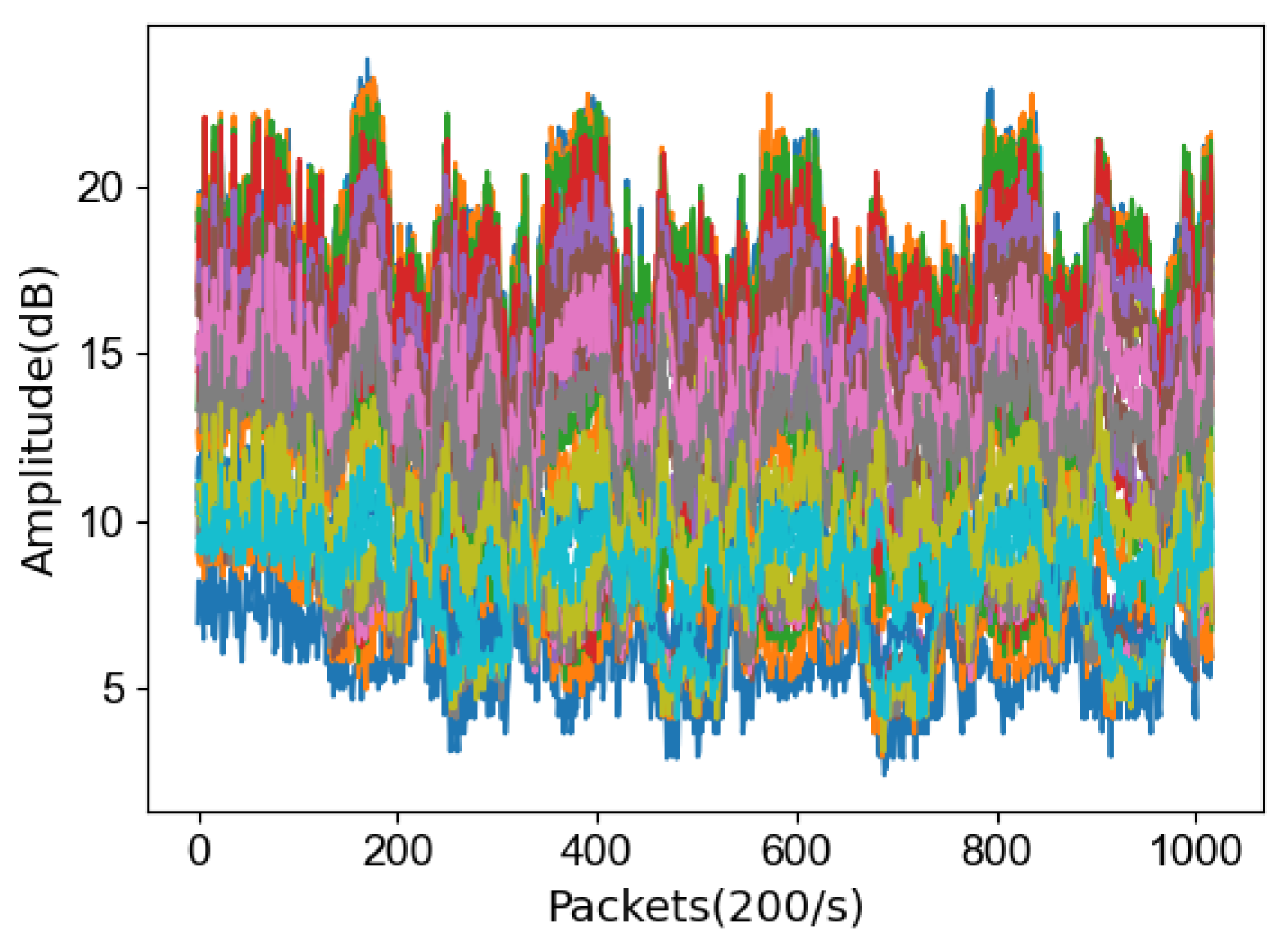
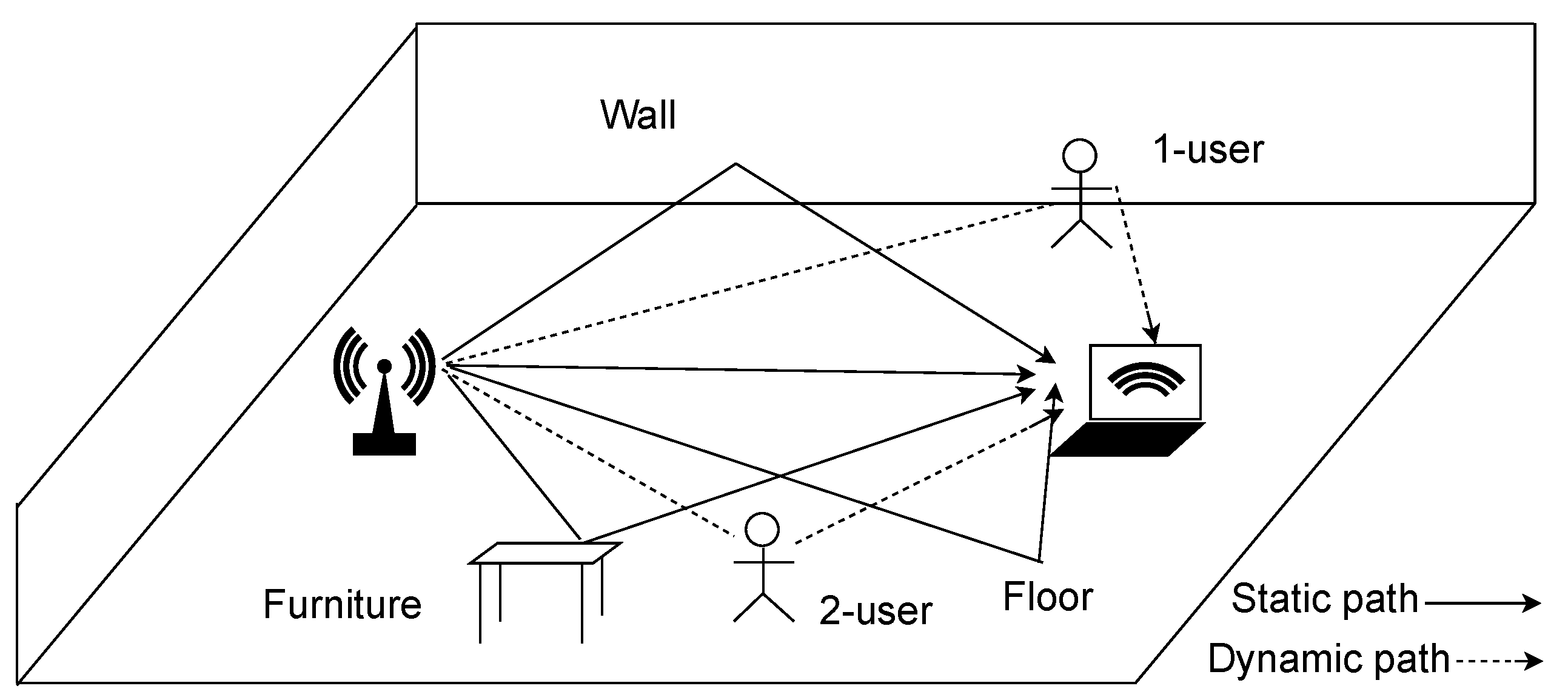


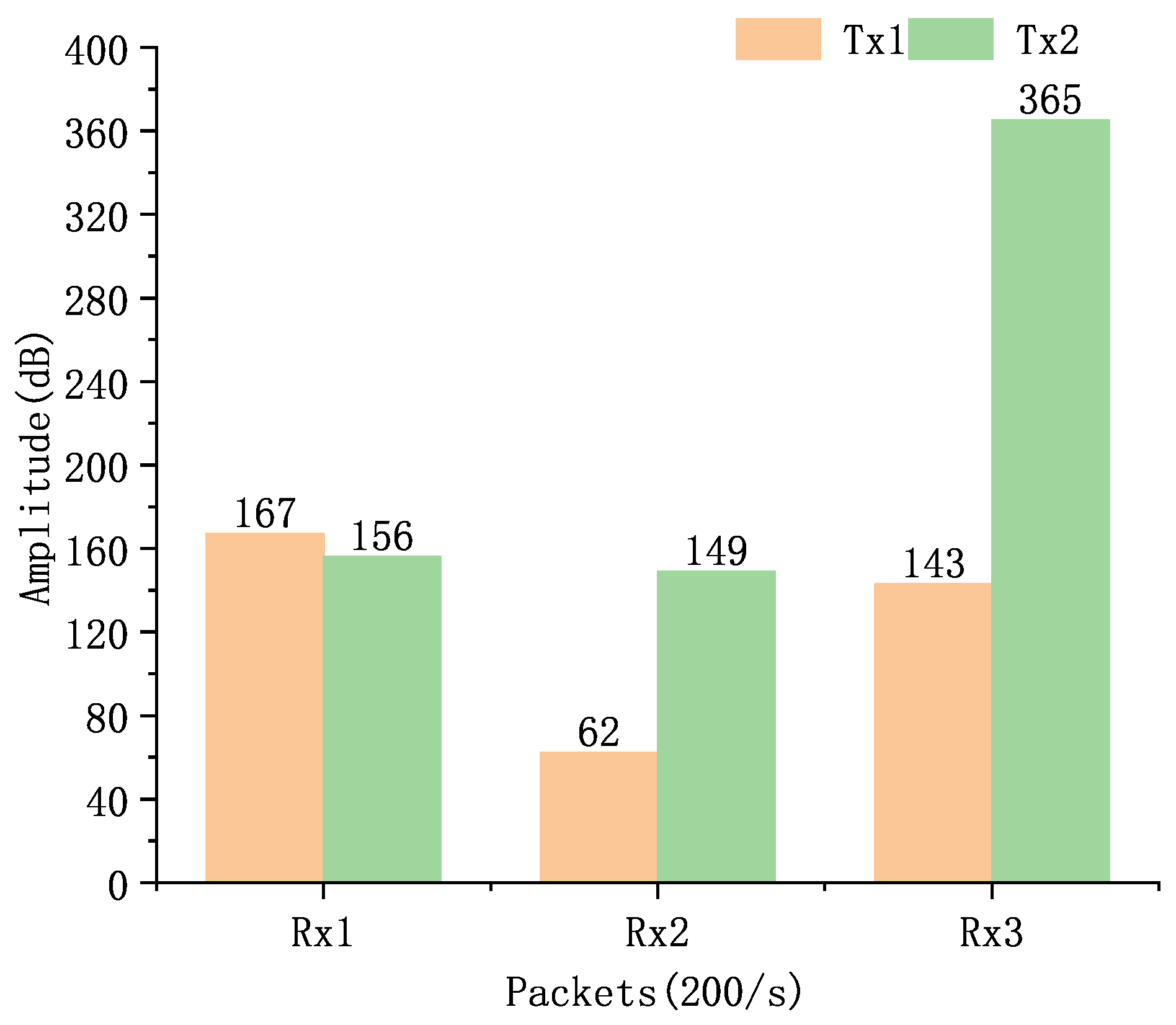
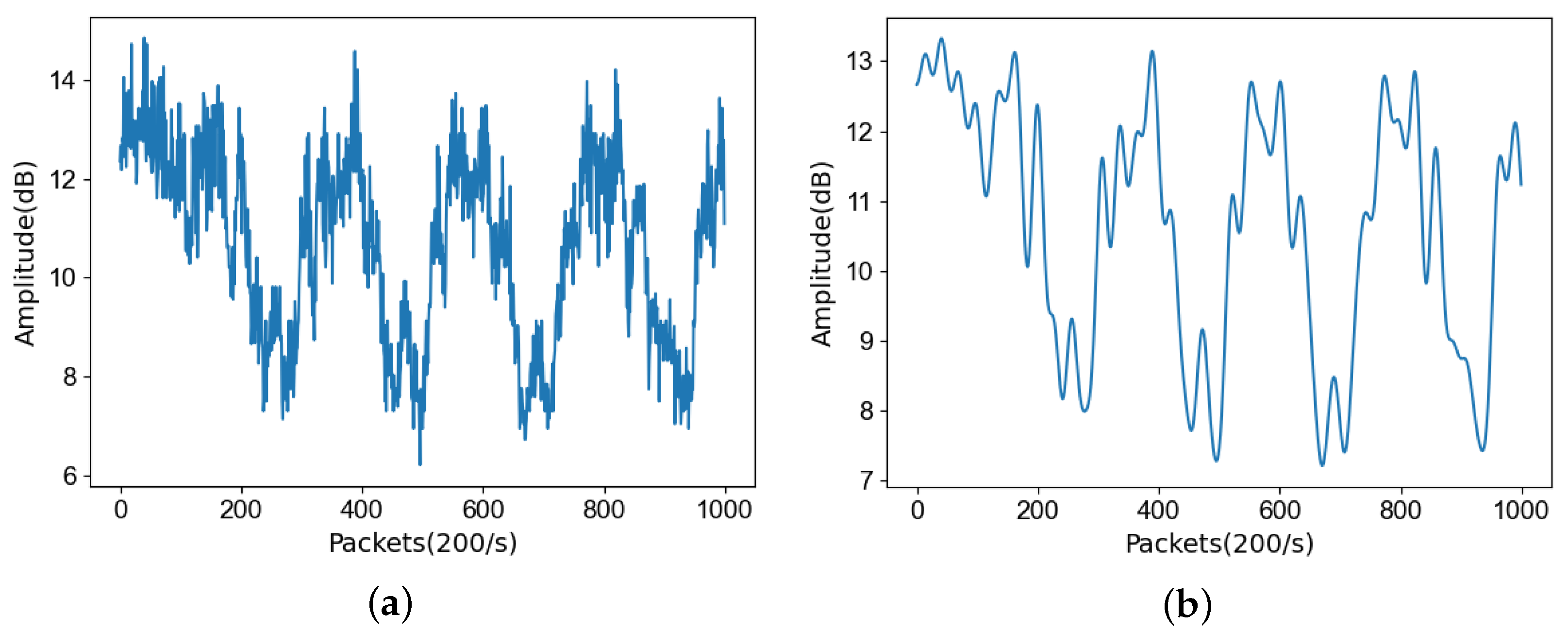

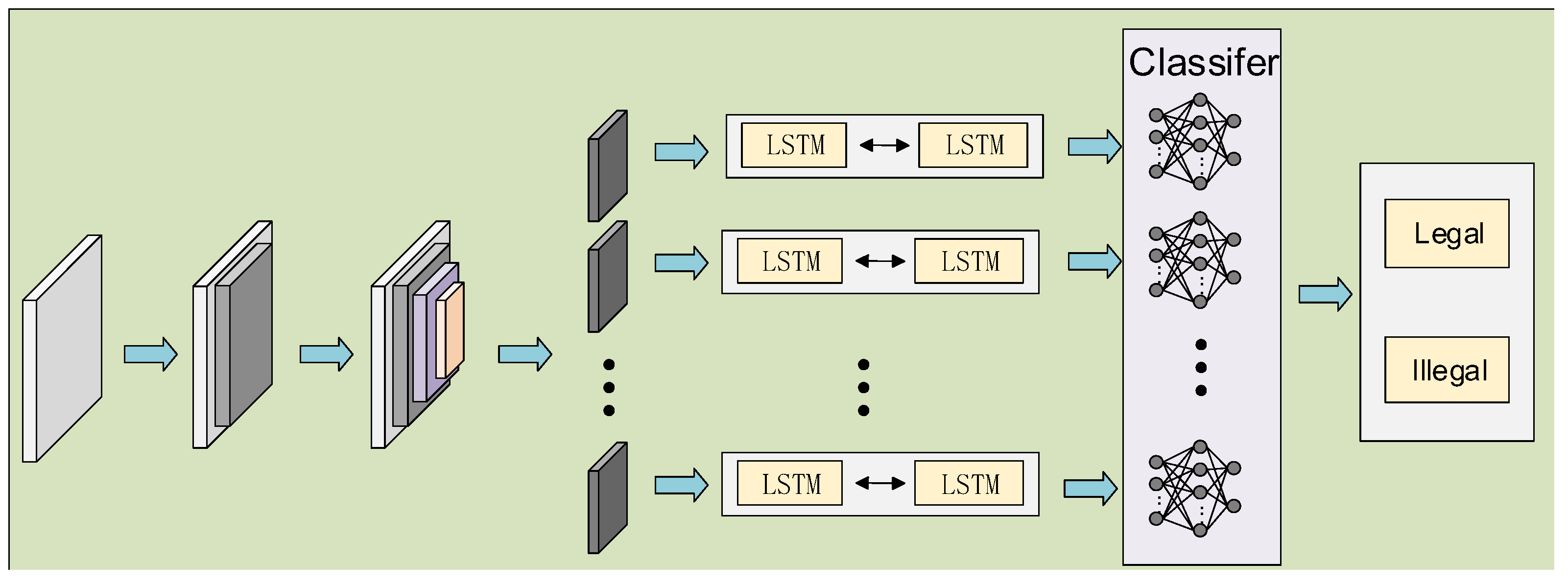
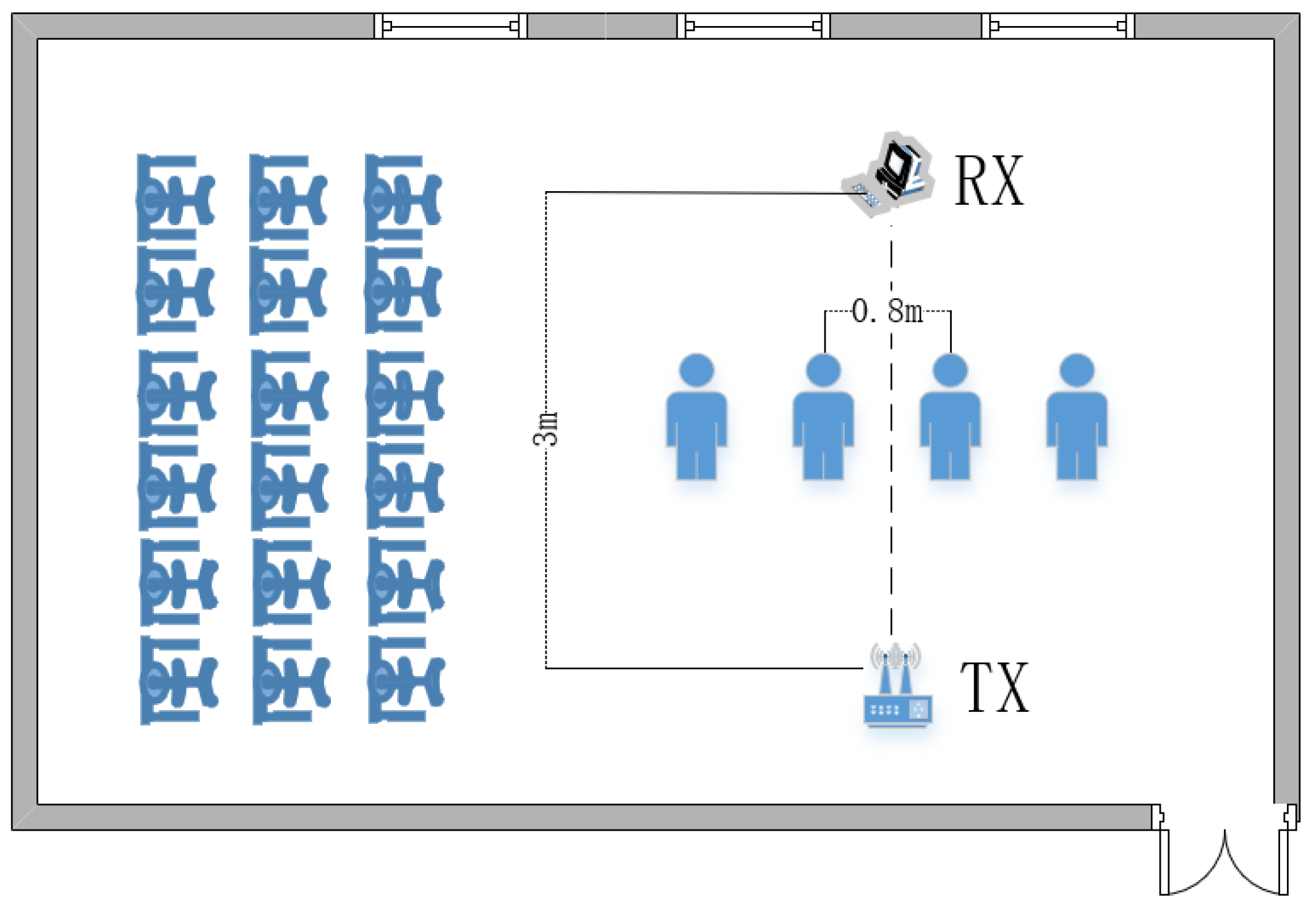
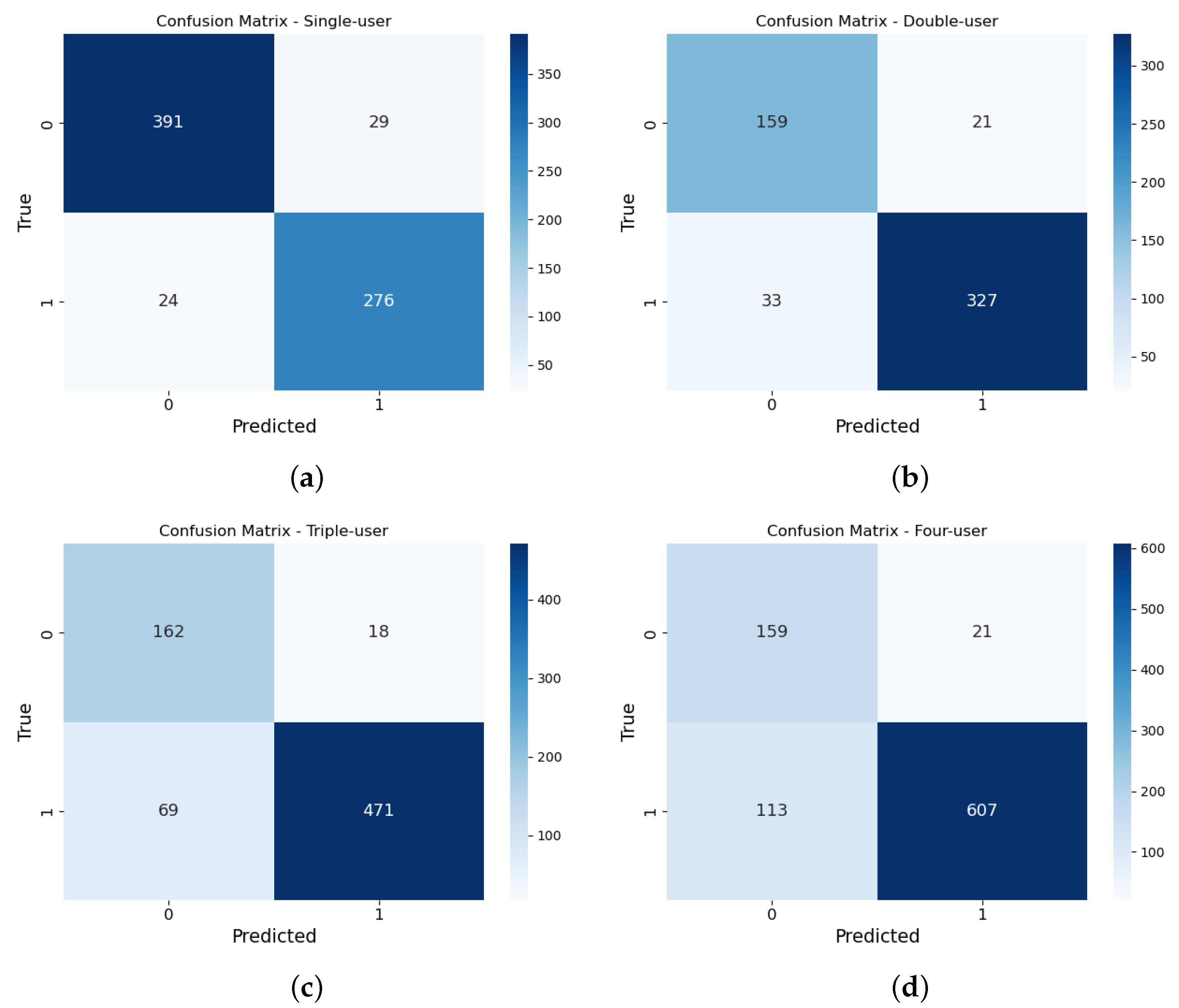
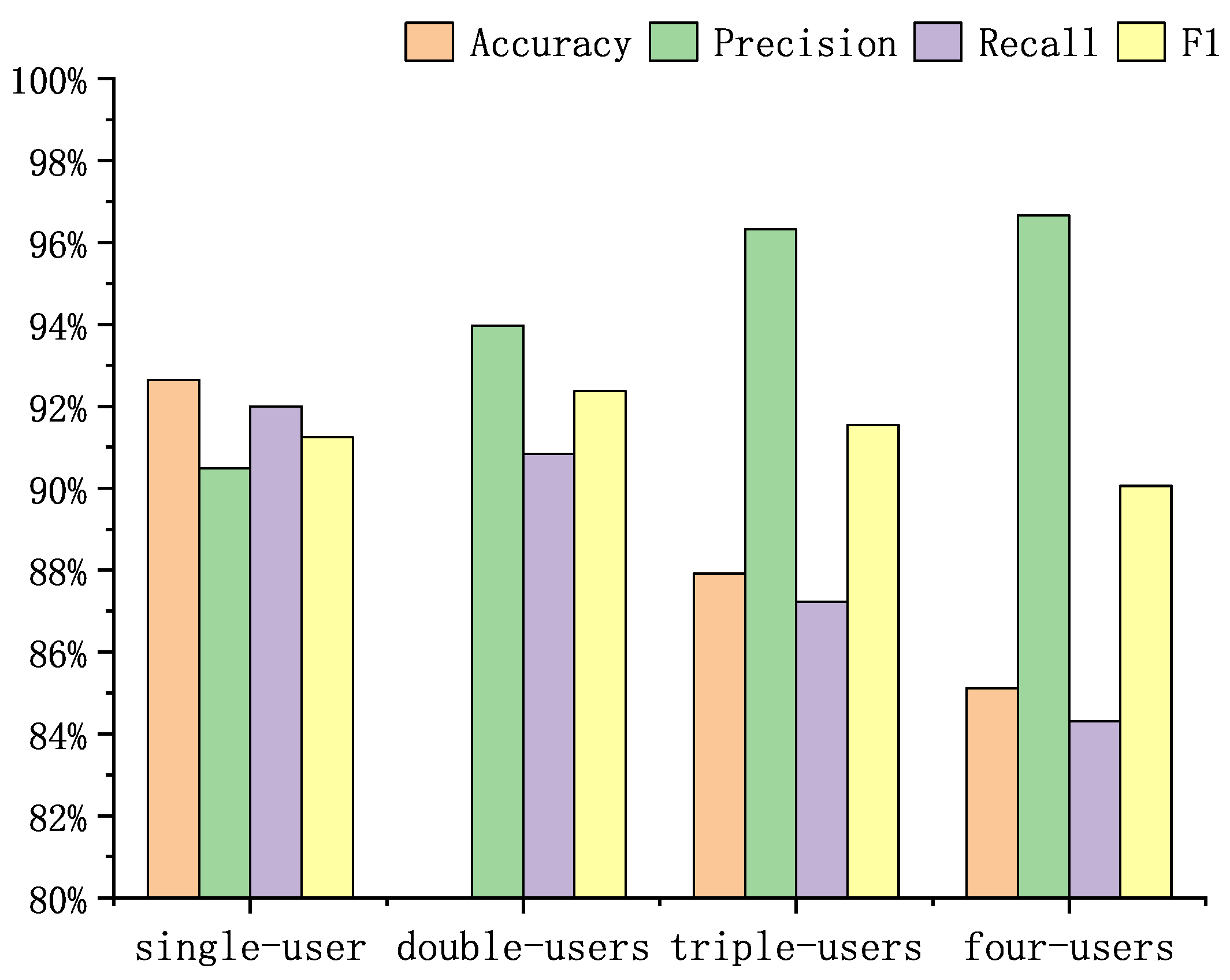
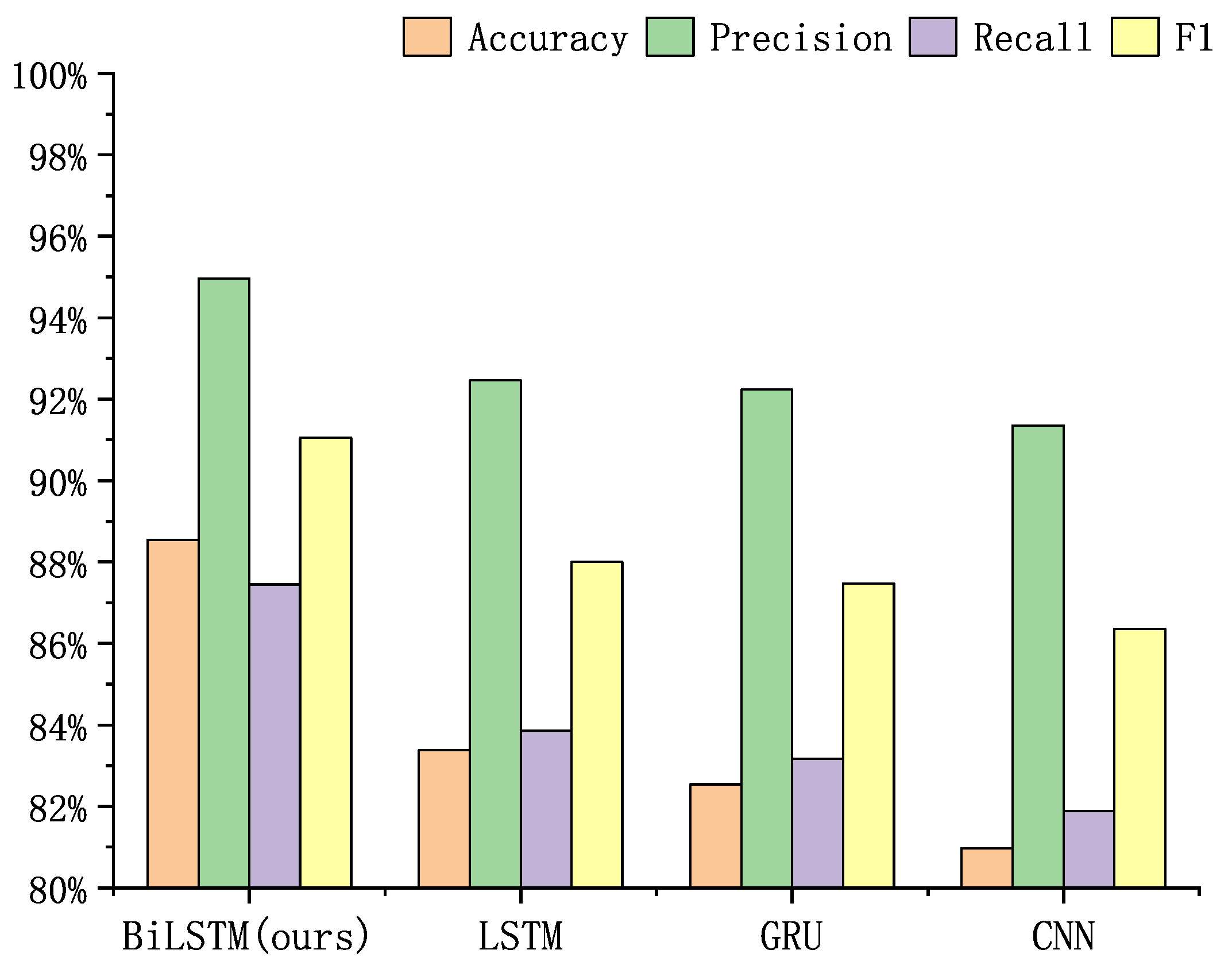
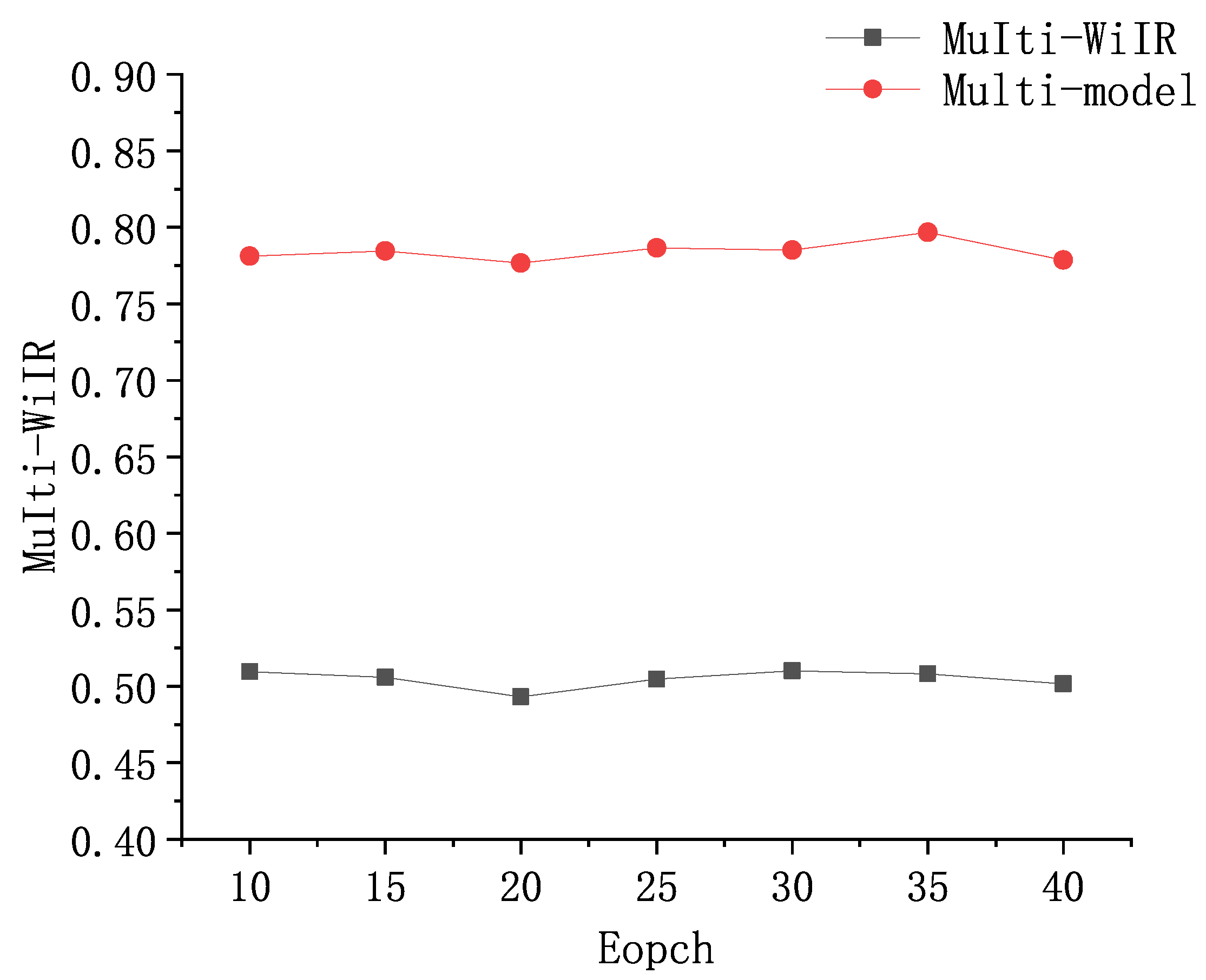
| Item | Value |
|---|---|
| Transmitter (Tx) | TP-Link Router |
| Receiver (Rx) | Intel 5300 NIC |
| Transmitting antennas | 2 |
| Receiving antennas | 3 |
| Number of subcarriers | 30 |
| Working frequency antennas | 5 GHz |
| Packet frequency | 200 Hz |
| Volunteer Number | Sex | Height (cm) | Weight (kg) | Age | Legitimacy/Illegitimacy |
|---|---|---|---|---|---|
| 1 | female | 165 | 56 | 23 | legitimacy |
| 2 | male | 180 | 81 | 28 | legitimacy |
| 3 | female | 163 | 59 | 22 | legitimacy |
| 4 | male | 181 | 82 | 24 | legitimacy |
| 5 | male | 182 | 82 | 25 | legitimacy |
| 6 | female | 164 | 55 | 23 | illegitimacy |
| 7 | female | 158 | 51 | 25 | illegitimacy |
| 8 | male | 175 | 70 | 21 | illegitimacy |
| 9 | male | 178 | 76 | 24 | illegitimacy |
| 10 | female | 166 | 53 | 23 | illegitimacy |
| 11 | male | 178 | 79 | 26 | illegitimacy |
| 12 | male | 175 | 75 | 24 | illegitimacy |
| System | Illegitimate Users’ Information | Location Requirement | Adjust Threshold | Applicable Scenarios |
|---|---|---|---|---|
| WiAU | yes | no | yes | single-user |
| MultiAuth | yes | yes | no | single-user |
| GaitSense | no | yes | yes | single-user |
| Wi-Sniffer | no | yes | yes | single-user |
| Multi-WiIR | no | no | no | multi-user |
Disclaimer/Publisher’s Note: The statements, opinions and data contained in all publications are solely those of the individual author(s) and contributor(s) and not of MDPI and/or the editor(s). MDPI and/or the editor(s) disclaim responsibility for any injury to people or property resulting from any ideas, methods, instructions or products referred to in the content. |
© 2024 by the authors. Licensee MDPI, Basel, Switzerland. This article is an open access article distributed under the terms and conditions of the Creative Commons Attribution (CC BY) license (https://creativecommons.org/licenses/by/4.0/).
Share and Cite
Wei, Z.; Dong, Y. Multi-WiIR: Multi-User Identity Legitimacy Authentication Based on WiFi Device. Future Internet 2024, 16, 127. https://doi.org/10.3390/fi16040127
Wei Z, Dong Y. Multi-WiIR: Multi-User Identity Legitimacy Authentication Based on WiFi Device. Future Internet. 2024; 16(4):127. https://doi.org/10.3390/fi16040127
Chicago/Turabian StyleWei, Zhongcheng, and Yanhu Dong. 2024. "Multi-WiIR: Multi-User Identity Legitimacy Authentication Based on WiFi Device" Future Internet 16, no. 4: 127. https://doi.org/10.3390/fi16040127
APA StyleWei, Z., & Dong, Y. (2024). Multi-WiIR: Multi-User Identity Legitimacy Authentication Based on WiFi Device. Future Internet, 16(4), 127. https://doi.org/10.3390/fi16040127






